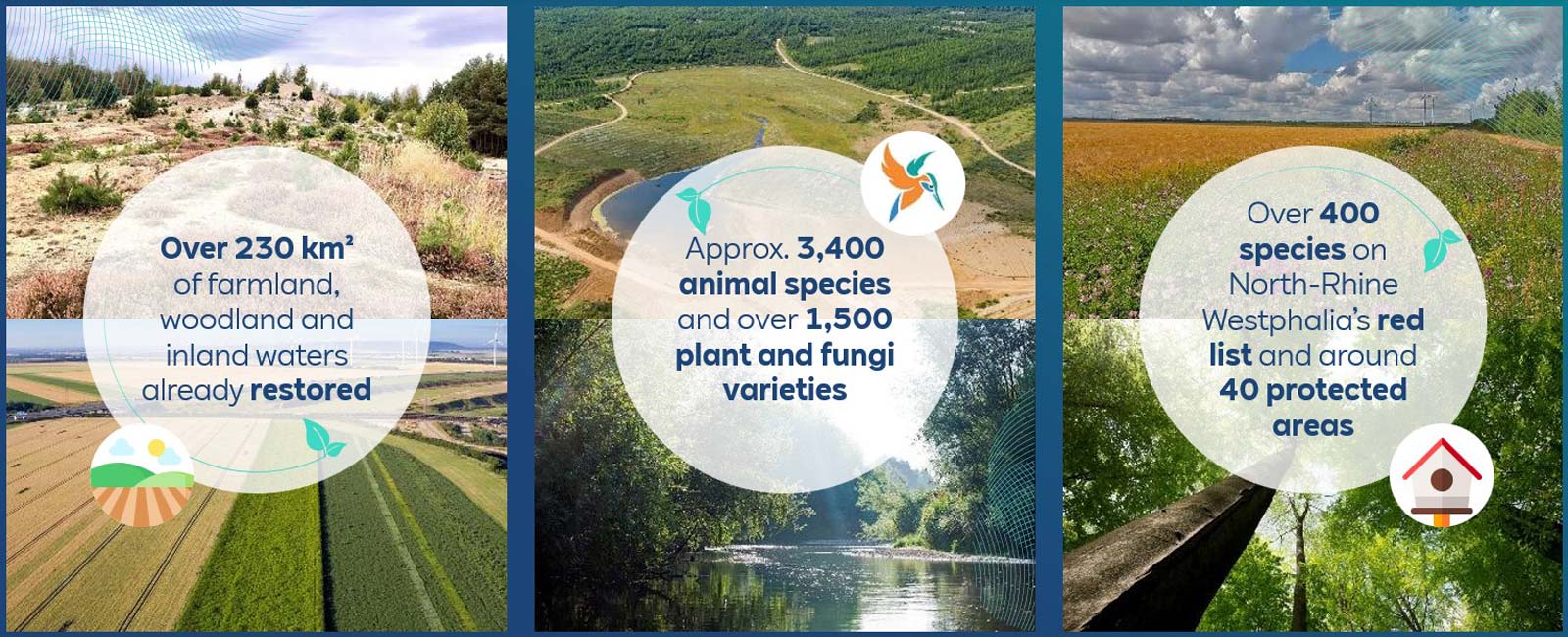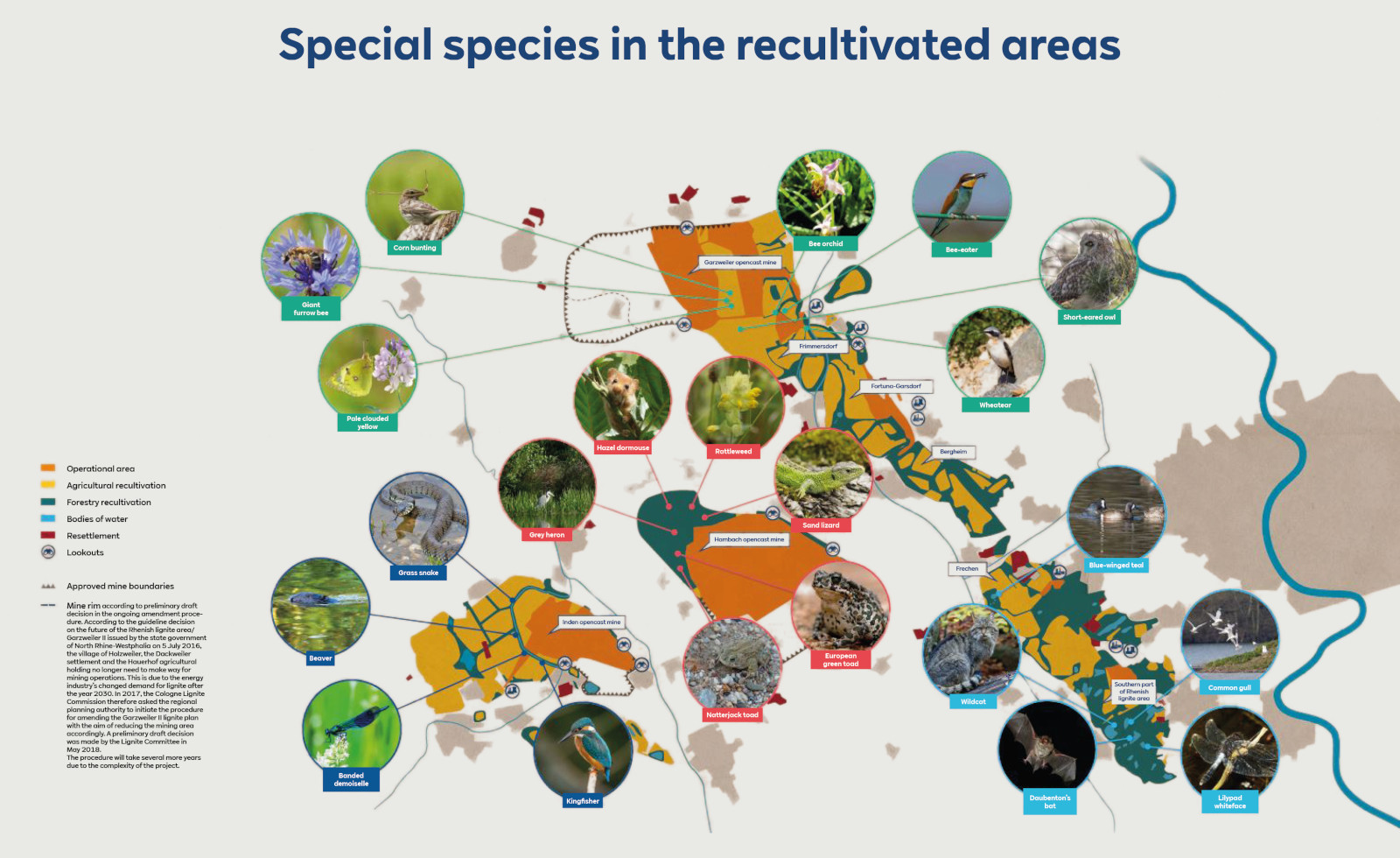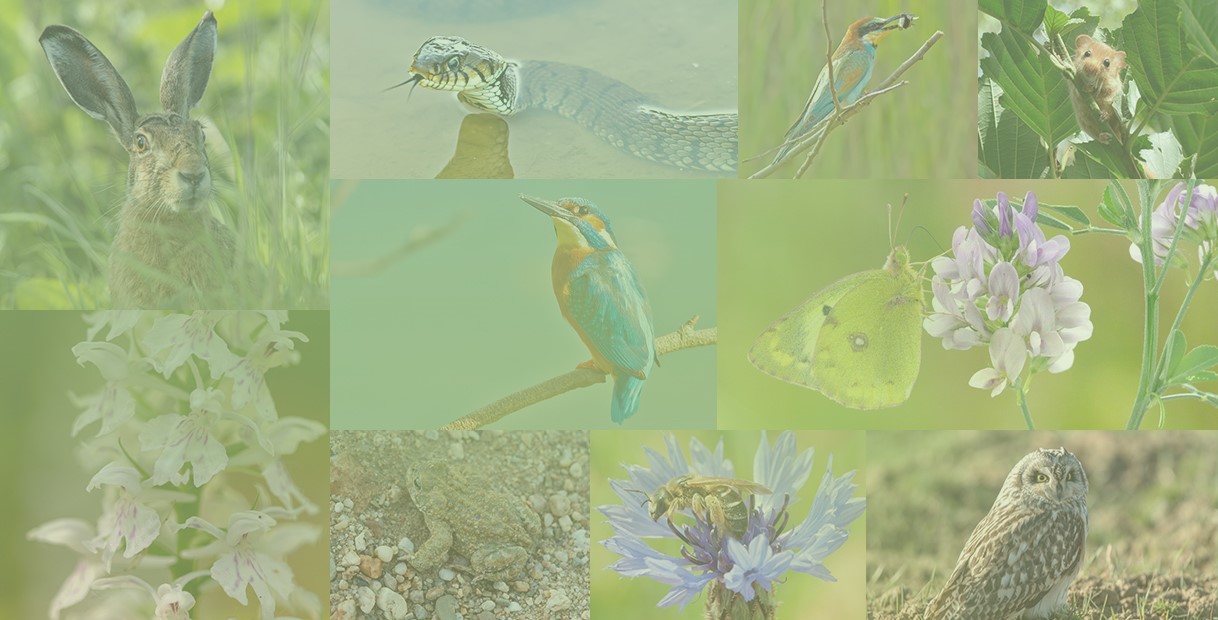
More than 3400 animals and around 1500 plants and fungi already recorded in recultivated areas
One thing is clearly apparent already from the many studies conducted over the years in the recultivated areas of Rhenish opencast lignite mines: An impressive diversity of species has established itself in the recultivated landscapes. The many species even include numerous special, rare and endangered animals and plants. Obtaining an understanding of these many species and recalling where they occurred would mean reviewing all of the studies and thousands of pages of recorded data – ultimately an impossible task.
Lists of species
The compilation ‘Animals and plants in recultivation – observations in the Rhenish lignite area’ was therefore published in 2005, providing a comprehensive overview of the results of these studies. Since 1999, and much earlier for the flora, all confirmed animal and plant species were classified in the biological system and summarised in a list of species. Since the compilation was published, this database continued to be maintained and updated through various research projects of the Recultivation Research Center and observations in the course of recultivation.
Of course, the current lists of species do not include all species that occur in the recultivated areas. They merely reflect the studies and reports recorded to date, with no claim of completeness. We also expressly point out that the existing summary does not constitute a complete biography of the published literature. That being said, the existing data is likely close to complete for most groups of animals and also for the plants. Numerous publications, mostly prepared independently of RWE, do however exist for birds, beetles and certain other groups. These are in part the work of numerous nature conservationists, collectors and ambitious hobbyists (usually organised in associations). They are not fully reflected here. In this respect the present examination is a supplement to the published literature.
Download full list of species (German)
Download list of mammals (German)
Download list of birds (German)
Download list of amphibians and reptiles (German)
Download list of bony fish (German)
Download list of dipterans (German)
Download list of hoverflies (German)
Download list of butterflies (German)
Download list of caddisflies (German)
Download list of hymenoptera (German)
Download list of beetles (German)
Download list of ground beetles (German)
Download list of bugs (German)
Download list of grasshoppers (German)
Download list of dragonflies (German)
Download list of springtails (German)
Download list of millipedes (German)
Download list of crustaceans (German)
Download list of spiders (German)
Download list of harvestmen (German)
Download list of annelids (German)
Download list of slugs and mussels (German)
Download vascular plants (German)
Download list of orchids (German)
Download list of mosses (German)
Finds included in the lists of species in the book ‘Animals and plants in recultivation – observations in the Rhenish lignite area’ are marked with an X. The year is specified for finds and reports after 2005. The references are cited in a biography below the list of species.

GIS find location
The find location data is currently being optimised and linked to a geographical information system (GIS). This will support more detailed, in-depth analysis of the information on the occurrence of species and the studies in the recultivated areas. It also ensures the currentness of the data going forward. The data can be easily exchanged with project partners as well. The exact localisation and recording of find locations is also supported. Previously, finds could only be assigned regionally in reference to specific mining areas within the list of species. Transferring the data to a GIS also provides a better overview of where studies have been conducted in the past, what the results were and where a special need for research still exists.
Find data is a key basis of our work. We therefore appreciate your finds and reports. Please provide us with your records and report new discoveries here.


